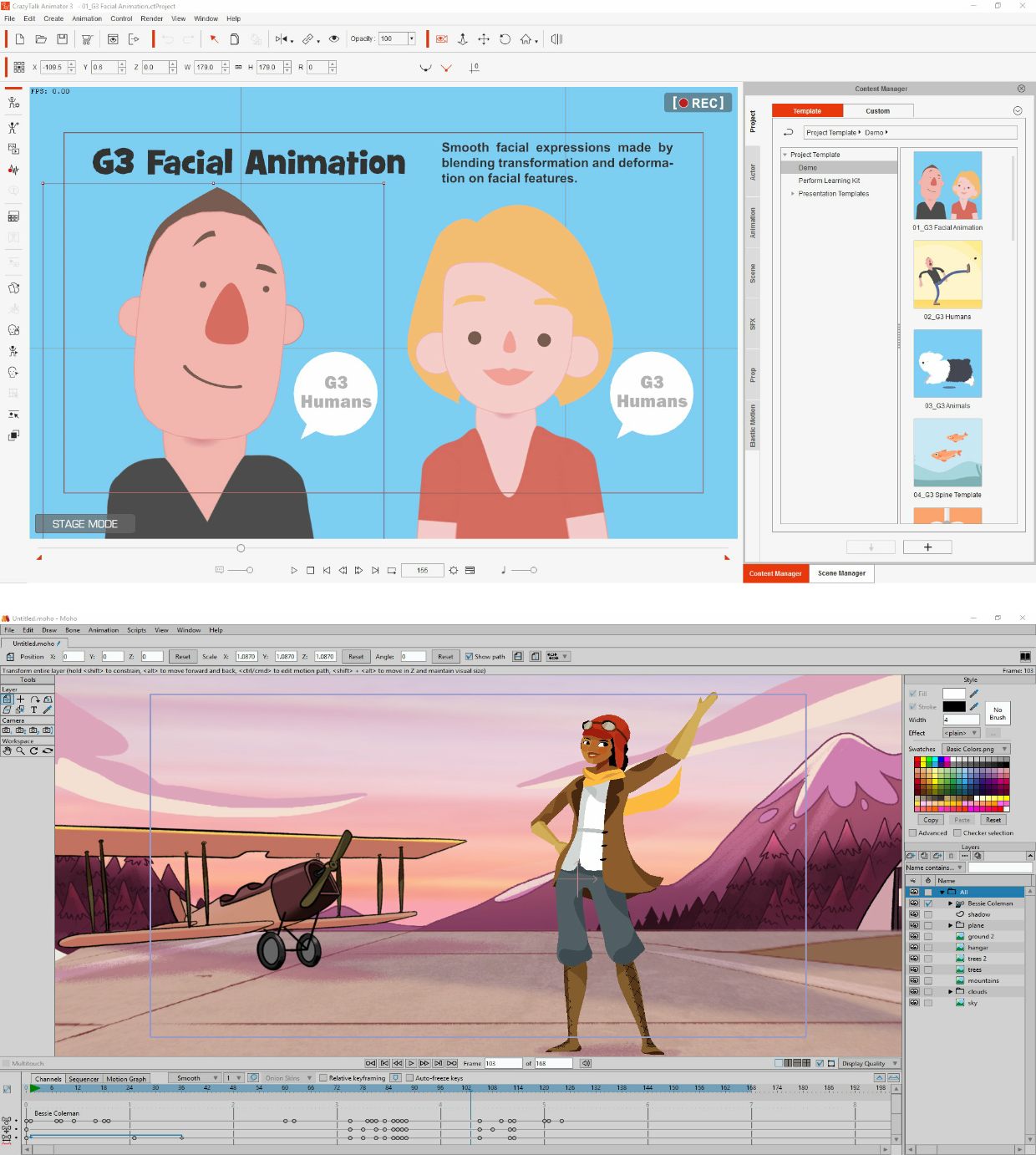CrazyTalk Animator (CTA) is the world's easiest 2D animation software that enables all levels of users to create professional animations with the least amount of effort. With CTA3, anyone can instantly bring an image, logo, or prop to life by applying bouncy Elastic Motion effects, or one of many motion templates available. For the character part, CTA3 is built with 2D character templates, valuable motion libraries, a powerful 2D bone rig editor, facial puppets, and audio lip-syncing tools to give users unparalleled control when animating 2D talking characters for videos, web, games, apps, and presentations.

Motion is a software application produced by Apple Inc. Download Bios Toshiba Satellite L640 Battery there. OS operating system. It is used to create and edit motion graphics, titling for video production. The first version of Adobe FlashAdobe Animate was FutureSplash Animator, a vector graphics and vector animations program released in May 1996. It is the one 2D animation software for all users. CrazyTalk Animator. Or one of many motion templates available. For the character.

CrazyTalk Animator 3 Character. Creating a character rig from original art can seem like a daunting task in CrazyTalk Animator 3. Especially if, all you really want to do is put together a quick animation with characters you may never even use again. Here's how to rig a CrazyTalk Animator 3, G3 human character, with the fewest components, whilst still being compatible with G3 character motions, and having a face capable of lip syncing and character expressions. You should be able to do this in under an hour - assuming you have your artwork ready to go. The process is even quicker if you have the Pipeline edition of CTA3 and take advantage of the supplied Photoshop templates and import feature. Offline Yashomati Song.
If you have the Pro edition you'll have to import your character art sprites in manually to one of the G3, Human, Dummy Templates. Driving License Check Pakistan. In my example I'll be using this (pictured) from VectorCharacters.net - a great source of free characters you can use in any project, including commercial.
Note that I'm assuming you have some experience using CTA3's character composer. This post isn't intended to be a detailed, step by step tutorial.
Artwork Preparation The first step is to break your character artwork up into six components; Head, Torso, Left Arm, Left Leg, Right Arm, Right Leg. If you're using one of the CTA3 Photoshop templates, there are two to choose from depending on the orientation of your character, Human_Side_Simple_Template.PSD or Human_Front_Simple_Template.PSD. I used the former for this character. Each of the body parts need to be on their own layer in your image file and arranged to match the pose of the dummy character. In the template you'll need to put each image layer within its corresponding image folder; RArm, LArm, Head, RThigh, LThigh, Hip (be sure to delete the existing dummy image from the hip folder). Left: Character separated into six body parts.
Right: Character assembled with bone points positioned. For my character I copied the full image to each of the corresponding folders then edited out every part of the image not relevant to that body part. I also had to do some work straightening out the characters arms, removing her backpack and finishing off the top of the legs and arms so they still look attached correctly to the character when they start moving around. In the template you'll then need to position all the bone markers to their corresponding body points. If you're not using the template and importing your body parts directly into CTA3 you'll position your bone points in the next stage. Create New G3 Free Bone Actor Button.
Importing the Character into CTA3 If you have the Photoshop template, just import this in using the Create New Character button. This will open up the character composer and you'll see your character all rigged with bones in place.
You may like to adjust the wire frame settings on the sprites to a finer setting to get smoother distortions when the arms and legs bend. Adjusting the wire frame to a finer setting. Make sure 'Affect All Layers' is ticked. If you don't have the template you'll need to export each component as a transparent PNG file.
Then, inside CTA3 drag out the appropriate G3, Human, Dummy Template onto the stage, open that character in the Character Composer. You'll need to import each body part into the template and use the bone editor to position all the bones. Creating an Animated Face Morph based heads has been a feature of CTA since version 1. Generally it's a feature used to create talking photographs but can also be used to bring your original cartoon artwork to life too. Morph heads include a range of comic style eyes and mouths that can save you a lot of drawing time, even with the greatly enhanced G3 character faces that require fewer images than their G2 counterparts.